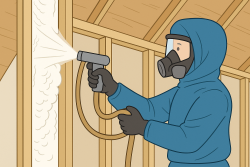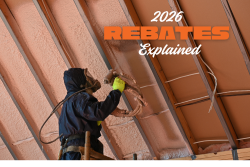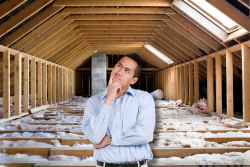When it comes to home insulation,blown-in insulation is often highlighted for its efficiency and versatility. Many homeowners frequently consider this option to increase their home's energy efficiency and comfort. However, a crucial aspect to evaluate is the cost and whether the investment in blown-in insulation is genuinely worthwhile. Let's delve into blown-in insulation's costs, benefits, and potential returns to help you make an informed decision.
Understanding Blown-In Insulation
Blown-in insulation, or loose-fill insulation, involves blowing or spraying insulation material into walls, attics, and other hard-to-reach areas. The two most common types are cellulose and fibreglass. Paper products are recycled into cellulose, and fibreglass comprises tiny glass fibres. Both materials effectively fill gaps and create a thermal barrier that reduces heat transfer.
Cost Breakdown
The cost of blown-in insulation can vary based on several factors, including the material used, the area to be insulated, and labour costs. Here's a general breakdown:
- Material Costs: On average, cellulose insulation costs between $0.60 and $1.20 per square foot, while fibreglass insulation costs between $0.50 and $1.00 per square foot.
- Installation Costs: Professional installation costs $1 to $1.50 per square foot. While DIY installation is an option, hiring professionals ensures proper coverage and efficiency.
- Total Costs: For a typical home, the total cost for blown-in insulation can range from $1,500 to $5,000.
Benefits of Blown-In Insulation
Investing in blown-in insulation offers numerous benefits that can justify the initial cost:
- Enhanced energy efficiency: Blown-in insulation reduces heat transfer, resulting in a warmer and cooler home during the winter. As a result, you will save significantly over time on your energy bills.
- Improved Comfort: By filling gaps and creating a consistent thermal barrier, blown-in insulation helps maintain a comfortable indoor temperature, reducing drafts and cold spots.
- Noise Reduction: The dense blown-in insulation also acts as a sound barrier, reducing noise from outside and between rooms.
- Eco-Friendly Options: Cellulose insulation comprises recycled materials, allowing homeowners to reduce their carbon footprint.
- Increased Home Value: Properly insulated homes are more attractive to buyers. Investing in blown-in insulation can enhance your home's resale value by improving its energy efficiency and overall comfort.
Return on Investment
While the upfront cost of blown-in insulation might seem substantial, the long-term savings can make it a worthwhile investment. Here's how:
- Energy Savings: Homeowners can save up to 20% by insulating their homes properly. Depending on your location and energy rates, this can translate to annual savings of $200 to $500 or more.
- Payback Period: The initial investment in blown-in insulation is recouped within three to five years through energy savings.
- Increased Home Value: Energy-efficient homes often command higher prices on the market, providing an additional return on your investment when it comes time to sell.
Is Blown-In Insulation Right for You?
Before deciding on blown-in insulation, consider the following:
- Home Age and Condition: Older homes or those with insufficient insulation can benefit significantly from blown-in insulation.
- Climate: Homes in regions with extreme temperatures will see the most significant energy savings.
- Budget: While the initial cost is an essential factor, consider the long-term savings and potential increase in home value.
Conclusion
Blown-in insulation offers homeowners a range of benefits. By enhancing energy efficiency, improving comfort, and reducing noise, blown-in insulation can provide significant returns over time. While the upfront cost may seem high, it is worth considering because of the long-term savings and potential increase in home value. For expert advice and professional installation, trust Reitzel Insulation to help you achieve optimal results and enjoy a more comfortable, energy-efficient home.
.png)
















